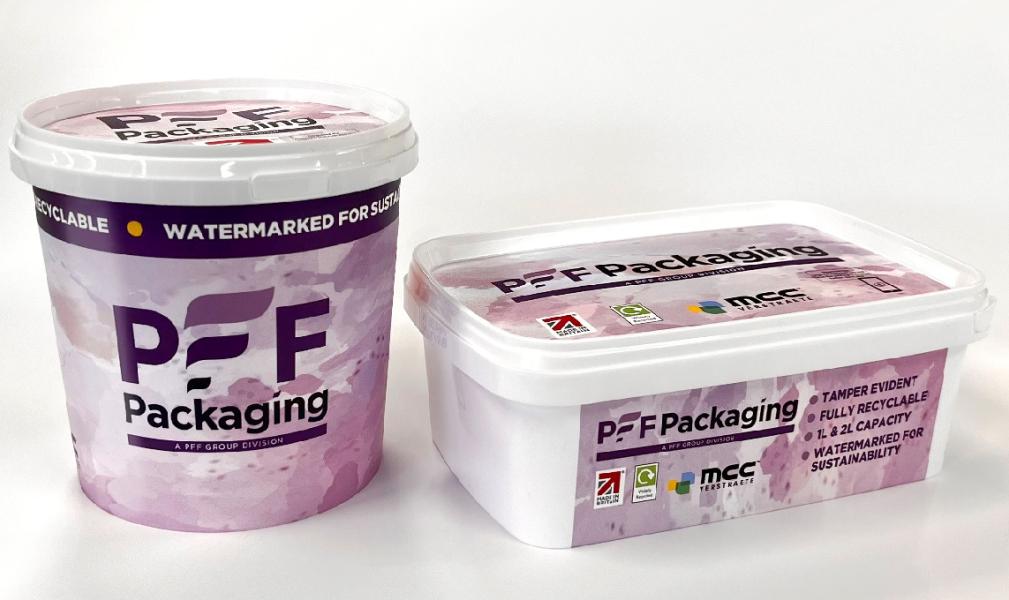
The systemic innovation in circularity, facilitated by the watermark, has been developed as part of a ‘HolyGrail 2.0’ pilot project.
The ambition is that these codes can be read at waste sorting facilities by high-resolution cameras, resulting in more accurate sorting and detection of higher quality recyclates, helping to achieve better recycling goals.
Digital watermarks are indiscernible codes, the size of a postage stamp, which cover the surface of a consumer goods pack. At local authority waste sorting facilities, the mark can be detected and decoded by a high-resolution camera on the sorting line and directed into the food or non-food sorting stream.
The initiative is part of a trial that aims to prove the technical and economic viability of intelligent sorting at scale, enabling new recycling streams that currently do not exist. The trial is being overseen by AIM – the European Brands Association and the Alliance to End Plastic Waste – and is supported by over 130 companies and organisations.
In March 2022, HolyGrail 2.0 concluded semi-industrial trials with successful validation. You can read more about this here.
This results in more accurate sorting stream content and in higher quality recyclates such as PP, it benefits the complete packaging value chain.
Ian Smith, group sales director at PFF Packaging, said: “Innovation and digital are the core drivers towards sustainability. At PFF we take our carbon zero commitments seriously as evidenced by our continued investment in new processes to engineer plastic out of products.
This watermark technology provides a digital record of a product’s journey and has an important role to play in helping to achieve recycling targets.”
Return to News